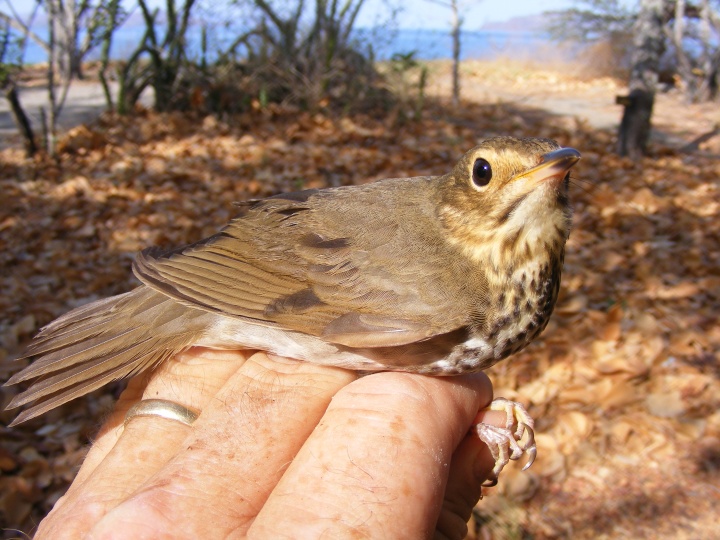MAPS
Mapping Avian Productivity and Survivorship (MAPS)
The Thunder Cape M.A.P.S. station has been in operation during most breeding seasons from 1992 until the present. We contribute data to The Institute for Bird Populations’ Monitoring Avian Productivity & Survivorship program, providing a unique data set of the birds breeding in the fir/birch Boreal forest north of Lake Superior.
In our first 19 years of (June/July) operation we banded 939 birds of 43 species. Forty-six per cent of all birds banded were of 3 species that were also the only species banded every year of operation. They were Swainson’s Thrush (21% of all birds banded), American Redstart (16%) and Magnolia Warbler (9%). Encountered most seasons were Black-throated Green Warbler (7%), Ovenbird (6%) and Red-eyed Vireo (6%). Less abundant, though commonly encountered most seasons, were Black-and-White Warbler, Nashville Warbler, White-throated Sparrow, Canada Warbler, Yellow-bellied Flycatcher, Black-throated Blue Warbler and Myrtle Warbler.
- Thunder Cape MAPS Results
Numbers of birds banded at Thunder Cape MAPS station 1992-2010
Gallery

Swainson’s Thrush at Thunder Cape (John Woodcock photo) 
Magnolia Warbler at Thunder Cape (John Woodcock photo)

